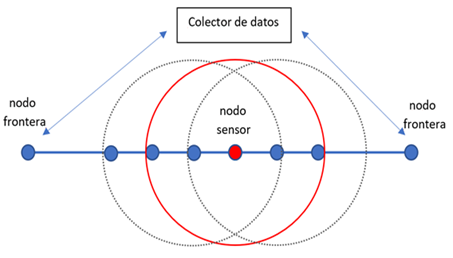Revisión de requisitos, protocolos y desafíos en LWSN
Contenido principal del artículo
Resumen
Las redes inalámbricas de sensores son aplicables en diferentes topologías, un caso especial es la topología lineal, la cual está presente en el monitoreo de infraestructuras lineales a gran escala. Los requisitos de las topologías lineales difieren de las otras topologías. Las arquitecturas y protocolos para las redes inalámbricas de sensores son referencias que se modifican en función de la aplicación, estas arquitecturas y protocolos son muy complejos si se les aplica a topologías lineales con miles de nodos. En este artículo se discute los estándares y protocolos existentes aplicables a las redes inalámbricas de sensores lineales, se definen sus características muy particulares y como los protocolos existentes pueden satisfacer los requisitos de redes con topología lineal. Luego se presenta información relacionada con las redes inalámbricas de sensores lineales, el control de acceso al medio, el enrutamiento, el transporte y los requerimientos específicos de este tipo redes. Finalmente, se identifica los desafíos para los protocolos existentes y algunos desafíos para los nuevos protocolos diseñados para topologías lineales.
##plugins.themes.bootstrap3.displayStats.downloads##
Detalles del artículo
Sección

Esta obra está bajo una licencia internacional Creative Commons Atribución 4.0.
Los autores que publican en esta revista están de acuerdo con los siguientes términos: Los autores conservan los derechos de autor y garantizan a la revista el derecho de ser la primera publicación del trabajo al igual que licenciado bajo una Creative Commons Attribution License que permite a otros compartir el trabajo con un reconocimiento de la autoría del trabajo y la publicación inicial en esta revista. Los autores pueden establecer por separado acuerdos adicionales para la distribución no exclusiva de la versión de la obra publicada en la revista (por ejemplo, situarlo en un repositorio institucional o publicarlo en un libro), con un reconocimiento de su publicación inicial en esta revista. Se permite y se anima a los autores a difundir sus trabajos electrónicamente (por ejemplo, en repositorios institucionales o en su propio sitio web) antes y durante el proceso de envío, ya que puede dar lugar a intercambios productivos, así como a una citación más temprana y mayor de los trabajos publicados.
